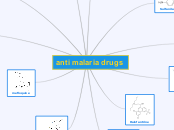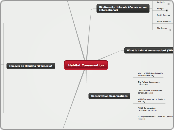Equilibrium
How does human use of water imact euqilibrium of the water cycle system?
run-off/ effluent
How do humans contaminate water supplies?
What is the impact of industrial water use and waste treatment?
How can we reduce industrial solid and chemical effluent and waste heat water discharges?
What is the impact of run-off from streets/ cities/ ag land
How can we reduce solid and chemical effluent? How can we control flooding?
What is the impact of household sewage treatment?
How can we reduce treated and untreated sewage discharges?
collection
How do humans collect and use water?
Does everyone have the same access? Where? Why?
social/political & population/ cultural geography questions
How can we increase water supplies?
social engineering: population control, migration, adaptation
civil engineering (desaliniazation, dams, aqueducts etc.)
socio-pollitical/ ecological: conservation = reduce collection
How available are water supplies?
Where is water collected? Where are population centers? How is water conserved/ wasted?
How safe are water supplies?
How is water treated? What is safe? What are unintended consequences of treatment (chloromines, floride, salinization, etc.)
population growth
increasing demand / person
accelration, scale, exponential growth, fractions
Hydrological Cycle
SOLAR NRG cannot be created or destroyed-- it transfers from H2O to H2O molecule, driving state changes.
There is a finite amount of water on Earth. Water has been recycled for billions of years.
Almost all water has disolved solids in it.
Thermodynamics: the water cycle is a closed system. Matter and NRG cannot be created or destroyed.
when water evaporates, it does not go away
water can be invisible
Gasous H2O reacts with acids and bases in the atmosphere
evaporation: Direct solar NRG and heat lead to solid and liquid H2O transitioning to gaseous state
Tranpiration: photosynthesis, cellular respiration: plants use NRG from the sun to create glucose, and release H2O as gas
clouds, fog, rain, snow etc. all come from evaporated H2O gas that contacts a solid (such as dust) and thus transfers some of its heat, which cools the H2O and drives a state change to liquid
precipitates contain solids
condensation and precipitation = decrease in K NRG, transition of water to liquid and/ or solid state
streams, rivers, lakes, oceans, glaciers-- all water both liquid and solid-- comes from rain, snow and fog. They all contribute to evaporation.
All life on Earth depends on liquid water that collects on the surface.
surface H20 sources are solutions and suspensions
Run-off and collection = water in liquid or solid form converting potential NRG from gravity and topography









